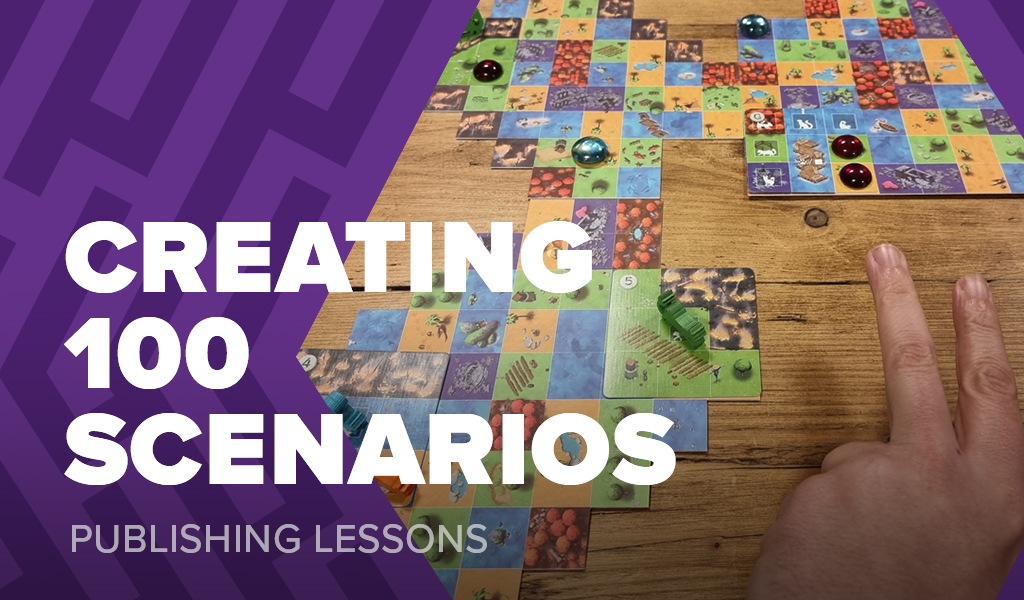Creating a game with 100 scenarios

This morning I sent the final 2 files for Race to the Raft to my factory for printing, the campaign booklets. Between the 2 books there are 109 scenarios available to play and designing them has certainly offered some unique challenges.
While competitive games like Vadoran Gardens and The Isle of Cats typically have just 1 or 2 ways to set up the game and play, cooperative games often have different options. But even then, many cooperative games like The City of Kings only have 10 – 20 levels which need to be played and tested, few games reach 100 or more.
Playtesting
It’s not unusual for playtesters to play a game multiple times and while looking for people who will happily playthrough 10 scenarios is a bit more challenging (people have limited time), it isn’t that difficult.
However, looking for playtesters who will play a game over 100 times is hard. There were plenty of people who wanted to play Race to the Raft that many times as they were enjoying it and wanted to play more, but with limited time it would take months for them to play them all.
At 1 hour a level, if you played for 3 hours a day for a month, you would play just over 80% of the scenarios in Race to the Raft, assuming if you lose you don’t replay the level.
I found the most effective way of solving this was to break the scenarios down into groups. I created 11 sets of 12 scenarios, with each set having 2 or 3 scenarios that overlapped other sets.
For each playtest group I offered them a set of scenarios and if they wanted to play more, they could opt to take another set later.
By including overlapping scenarios in each set, I could compare how different groups rated the same scenarios to see how their feedback and measurement of difficulty aligned.
This approach resulted in needing more playtesters than I would typically use for a game but made it easier to find people who had enough available time.
Creating rules of design
Perhaps the most important part of designing a game with so many scenarios is designing the system that defines a scenarios difficulty.
By the time I designed the 20th scenario for Race to the Raft I could accurately estimate the difficulty it would offer 95% of the time.
While it took time to define the rules, I feel that it helped to make the game experience better and also reduced the amount of playtesting each scenario would independently need.
Worthy of inclusion
It is easy to get carried away when creating lots of scenarios and a question I had to ask myself for every single scenario in Race to the Raft was:
Is this scenario worthy of being included?
My final piece of advice for anyone looking to design a game with lots of scenarios is to make sure each scenario offers something new. Question it’s value and don’t be afraid to push at the edges of your scenario design rules.
If you have a lot of scenarios that feel the same, then players will get bored and lose interest in trying the next one.
I had a lot of fun trying to come up with new ways to make the scenarios in Race to the Raft feel different.
Frank West
Frank West is a gamer and designer based in Bristol, UK. He published his first board game, The City of Kings, in 2018 and now works on other games and organising events in the local area. His goal? To design and publish games focusing on immersive themes, fun mechanics and beautiful components. If you have any questions or would just like a chat, feel free to get in touch at any time!

